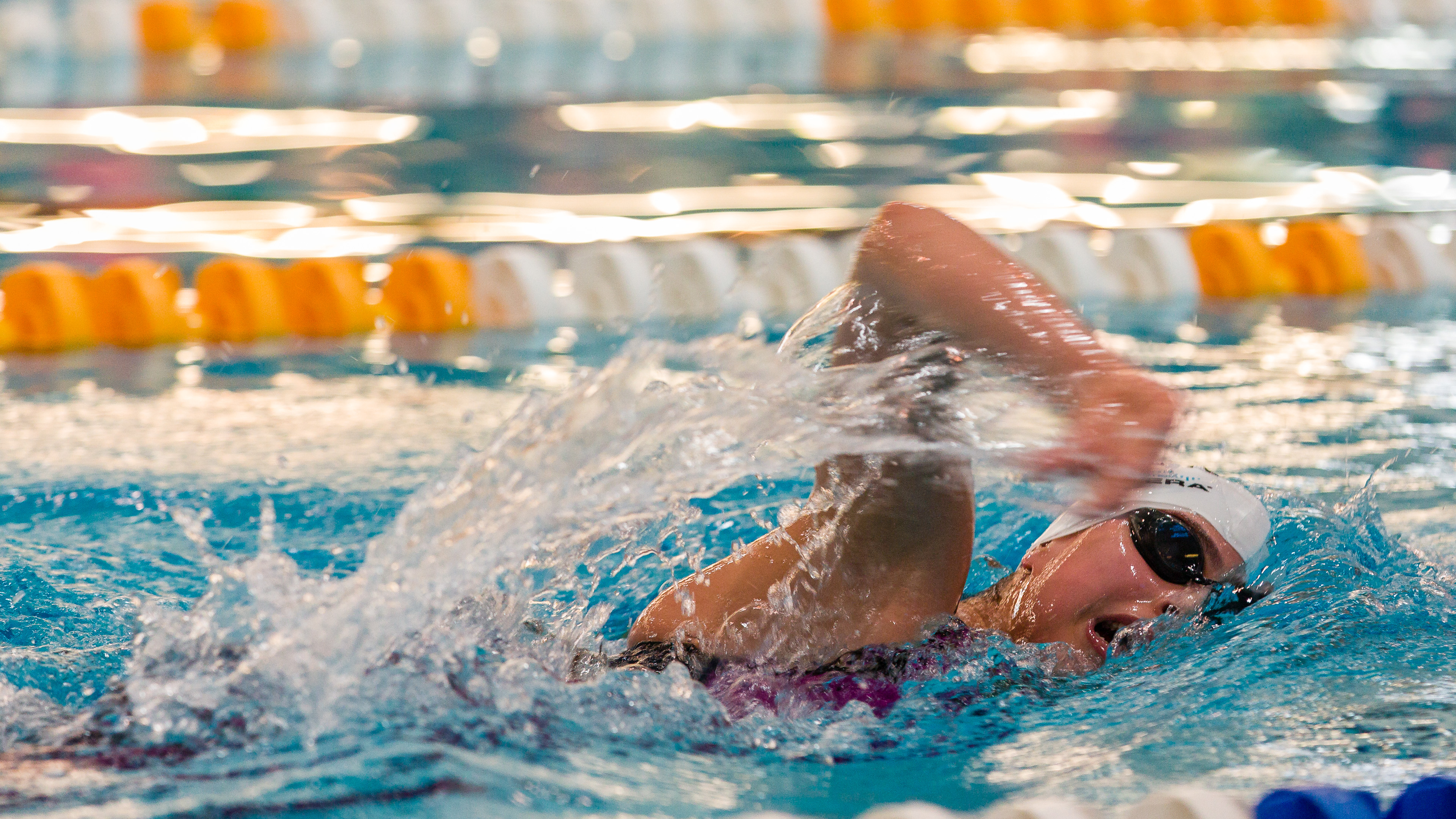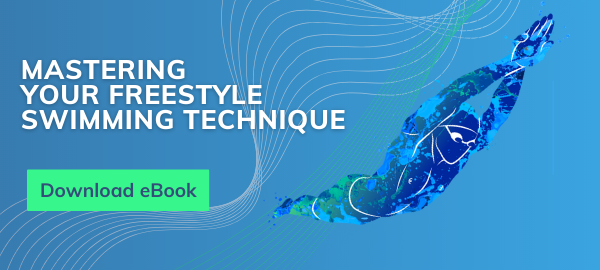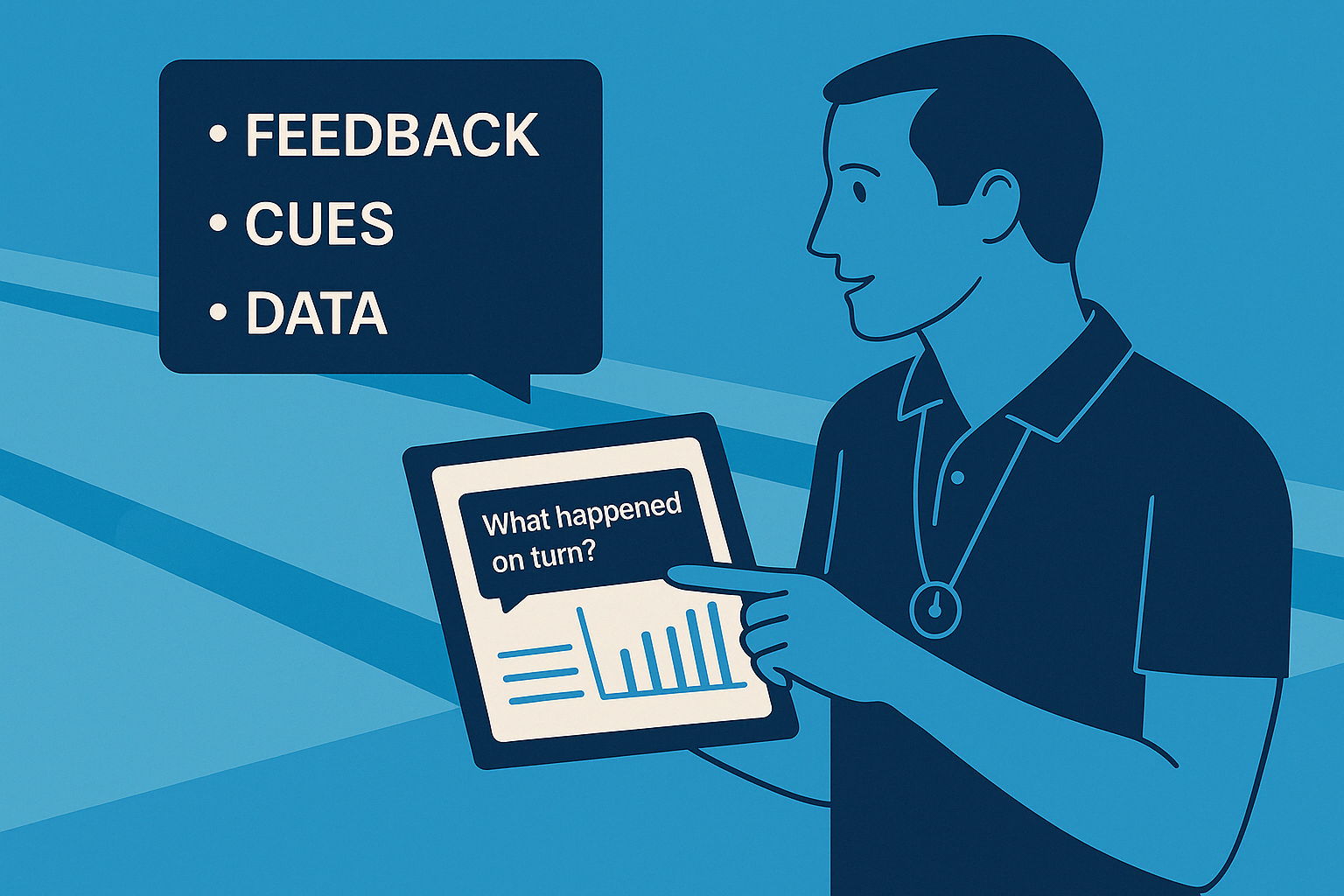When people talk about freestyle swimming it’s usually all about stroke rate, stroke efficiency, power, and kick. Only rarely the term freestyle recovery is mentioned. However, the recovery phase, which marks the fourth and final phase of the freestyle stroke may well be just as, if not even more, important than phase 1 – the catch, phase 2 – the pull, and phase 3 – the exit, of the freestyle stroke. As the name already implies, the recovery phase is supposed to help you recover during your freestyle stroke and set your body up for the following stroke. In this article, we are going to tell you more about how you can have a flawless freestyle swimming recovery and set yourself up for success in the pool.
What is the recovery phase of the freestyle stroke?
There are 4 different phases to the freestyle swimming stroke:
- The catch, which is the beginning of your freestyle stroke, when your hands enter the water.
- The pull, which is the action of moving your arms through the water along your body to propel yourself forward in the water.
- The exit, which marks the final movement of your hand below the water surface and the moment your hand and arm leave the water after the end of your pull.
- The recovery, which is the return of your arm to the front of the body to set it up for another stroke cycle.
The fourth and final phase of the freestyle swimming stroke, which is the recovery phase, begins as soon as the hand exits the water and ends when your hand and arm drop back into the water in front of your body. When you are recovering your arm at the end of a stroke, it is completely outside of the water and it is not directly impacting your forward movement in the water. Because it is not directly part of your forward movement in the water, it is essential to complete the recovery phase while using as little energy as possible – hence the term recovery phase.
While recovering your arm during your freestyle stroke, we recommend relaxing all unnecessary (and essential to the other phases of the stroke) shoulder, arm, and hand muscles. Don’t make the mistake of forcing your hand and arm forward while keeping too much tension in the shoulder, arm, and hand muscles. The recovery phase should be a natural, relaxed swing forward of your arm and hand.
If you keep your hands too close to the body during the recovery phase and make the recovery movement an unnatural movement, you may suffer from sore shoulders and fatigued muscles due to unnecessary energy expenditure. Based on your personal flexibility you will have a natural recovery path for your arm and hands. However, as with all phases of the freestyle stroke, there are some ways to recover your arm that are proven to be more efficient and result in a greater recovery effort and increased power in your freestyle stroke. The two most common recovery techniques are the high elbow recovery and the straight arm recovery which we will cover in-depth in the next paragraphs.
The high elbow recovery
The best example for a perfect high elbow recovery is Michael Phelps. If you don’t know what we are talking about, check out this video from the Beijing Olympic Games in 2008 where Michael Phelps set the world record in the 200-meter Freestyle ( 1:42.96). His freestyle looks completely effortless compared to some of the other competitors in swimming in this video. Once asked about how he managed to make his freestyle seem so effortless, Phelps mentioned the three “secrets” which are a great rotation, a great kick, and keeping the elbow as the highest point during the entire recovery.
In fact, the high elbow recovery really only requires two things. The tip of your elbow should always be pointing towards the ceiling (or sky, if you are lucky enough to swim outdoors) and the elbow should create a 90% angle between the forearm and the upper arm. Most swimmers do at least one of the two, but to achieve a proper high elbow recovery, both are essential.
Practicing a proper high elbow recovery can make you a more efficient swimmer because you are avoiding any unnecessary side movement of your arms which takes time, energy and increases drag. A high elbow recovery can also prevent unwanted shoulder injuries by putting less stress on your shoulder joint.
The high elbow recovery should be your go-to recovery style when you are swimming distances longer than 100 meters in competition. For sprint races, you should consider using the straight arm recovery which we will explain in the next paragraph.
The straight arm recovery
During sprint races, swimmers have a much higher stroke rate and put much more power into their stroke because races only last somewhere between 20 and 50 seconds. Despite the fact that the straight arm recovery takes longer than the high elbow recovery, most world-class 50-meter sprinters can be observed using a straight arm recovery during their sprint races.
As you can see in this Video of the 50-meter Freestyle final of the World Championships 2014 in Doha, Qatar, 6 out of 8 swimmers are using a clear, straight arm recovery. Now you might ask yourself – why? If it takes longer to recover a straight arm, what is the point?
Well, there is a simple explanation for this. During the straight arm recovery, the concept of coupling motion comes into effect. The motion of the straight arm recovery by itself creates no propulsion force. However, combined with the other arm which is doing the pull, the straight arm recovery is coupled with a propulsive force and therefore enhances the effect of that propulsive force. The more power we put into the straight arm recovery, the more we can enhance the forces of our pulling arm and the kick which is propelling us through the water. The key elements of the straight arm recovery are strength and power, as well as proper timing. Because this is a very tiring and powerful motion, it takes a lot of training to complete a whole 50-meter race, let alone a 100-meter race with a straight arm recovery.
Drills to improve your freestyle recovery phase
There are several drills to get a better feeling for your recovery phase and of course, to improve your recovery phase. Although there are different styles of recovery, they all have very common aspects of technique. Here are our personal favorite drills:
Drill #1 - The Floppy Hand Drill
The purpose of this drill is to practice a relaxed recovery and to learn to rest your arm during your recovery. It is a great drill for swimmers who are using the high elbow recovery technique. To do this drill, push off the wall and begin swimming the freestyle catch-up drill. Instead of doing a regular recovery, slow the recovery arm down a bit, maintain a high elbow at all times and let your hand dangle (floppy hand) just above the water surface for the entire recovery. When the recovering hand reaches the front, flop it back in the water. Your elbow should always enter the water in your hand. Once you fully extend your arm, begin the stroke with your other arm.
The goal of this drill is to keep your hand as relaxed as possible and really just let it dangle along without doing anything to it. The entire movement of your recovery should come from your arms and shoulder.
Drill #2 – The Zipper Drill
The purpose of this drill is to practice a high elbow and a relaxed forward movement of the hand. It is a great drill for swimmers who are using the high elbow recovery technique. To do this drill, push off the wall and begin swimming regular freestyle. Instead of doing a regular recovery, slow the recovery arm down a bit, maintain a high elbow at all times and drag your thumb forward along your torso. Like a zipper, your thumb should always touch (or zip) the side of your body until it passes your armpit. After you zip your armpit, you continue with a regular recovery motion until your hand enters the water. This may be a bit unnatural in the beginning, however, it is a great drill to teach high elbow recovery and a stable body position.
The goal of this drill is to avoid throwing your arms to the side and to avoid using too much forward thrust when recovering your arm. The drill should make you feel how much easier a high elbow recovery is compared to all the other alternatives.
Now it’s time for you to take the guesswork out of swimming faster! Start thinking about your recovery phase and maybe even ask a friend or relative to make a video while you are swimming freestyle so you can better analyze it. Unless you are a sprinter, always aim to swim with a high elbow recovery. Remember that the recovery phase should help you recover and help set yourself up for a great catch, pull and exit for your next stroke. Implement these tips into every lap you swim and be consistent about it because changing or improving a stroke is like changing a habit – it takes time. Also, try to add the drills to your training sessions occasionally. They will make a difference!
To measure your improvements, we recommend training with the all-new TritonWear device. The wearable device tucks under your cap and records your workout as you swim. You remain focused on training and implementing the 5 quick tips to improve your freestyle stroke while TritonWear captures the intel you need to swim faster. To learn more about how TritonWear shows swimmers their strengths and weaknesses based on data collected while you are swimming click here.



.png)

.png)
